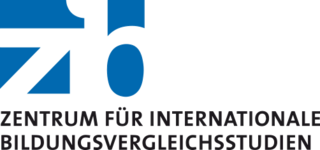Classroom experience, characteristics and outcome: multidimensional educational goals and the views of students and teachers (PISA-Ceco)
Project management TUM: Prof. Dr. Doris Lewalter, Dr. Mirjam Weis
Project management University of Koblenz: Prof. Dr. Anja Schiepe-Tiska
Research assistants: Pia Todtenhöfer, Anna Heinle
Associated researchers: Prof. Dr. Doris Holzberger, Prof. Dr. Stefan Krauss, Prof. Dr. Frank Reinhold, Prof. Dr. Kristina Reiss
The most recent PISA study 2022 showed that the mathematical and scientific competence as well as the motivation and interest of adolescents in Germany, decreased compared to previous PISA studies. Thus, these results show a downward trend in students’ multidimensional competences in STEM education in Germany. The average mathematical competence of fifteen-year-olds has decreased over the last ten years and is even lower in PISA 2022 than in 2003 (Diedrich et al., 2023b). Between 2003 and 2012, instrumental motivation and enjoyment of and interest in mathematics also decreased, while mathematics-related anxiety increased (Diedrich et al., 2023a). In addition, in Germany there was found a descriptive downward trend in science competence since PISA 2012, which became statistically significant for the first time in PISA 2022 (Kastorff et al., 2023). The examination of mathematics teaching in Germany also revealed weaknesses. PISA 2022 showed that simple calculations and application tasks play a major role in mathematic lessons. Thus, minimum standards that address a subject-specific basis are mainly addressed. However, these tasks primarily require limited methods and are barely motivating or flexible (Schiepe-Tiska et al., 2023).
The PISA 2022 additional study PISA-Ceco (Classroom experience, characteristics, and outcome: multidimensional educational goals and the views of students and teachers) was initiated and conducted in order to take a closer look at teaching as the core business of schools and to investigate research questions that go beyond the PISA study. PISA-Ceco makes it possible to investigate the reasons for the results of PISA 2022 by focusing on teaching as the core business of schools and the core task of the teaching profession (Schiepe-Tiska et al., 2021). Linked to the PISA 2022 survey, 74 ninth-grade classes and their mathematics and science teachers were examined in 52 schools as part of PISA-Ceco I (duration 2019 - 2023). Therefore, 50 mathematics and 64 science lessons were visited during the PISA survey period. Further, the teachers' and fifteen-year-old students' perceptions of the lessons and motivational-affective learning goals were assessed. In addition, tasks from these lessons (N = 567 analysis units) and exam tasks from the current school year (N = 4822 analysis units) were analyzed in order to determine the extent to which standard orientation has been incorporated into teaching practices and how it relates to students’ outcomes. In addition, 377 teachers completed an online questionnaire on their perceptions, attitudes, level of information, and didactic knowledge in the subjects mathematics and science.
This extensive database will be used in the PISA-Ceco II project (running from the beginning of 2024 to the end of 2025) for in-depth analyses of new research questions on background variables as well as on the implementation and perception of standard-oriented teaching.
PISA-Ceco II will focus on the following research questions, among others:
Multidimensional educational goals
Is there a relation between teachers' attitudes towards multidimensional educational goals and their standard-oriented (a) lesson planning, (b) lesson design, and (c) lesson perception in an everyday lesson in the subjects mathematics and science?
Motivational-affective experience
Is there a relation between standard-oriented lesson design and the motivational-affective experience of teachers and fifteen-year-olds in an everyday lesson in the subjects mathematics and science?
Characteristics of students and teachers
Is there a relation between multidimensional student competences from PISA 2022 or characteristics of teachers from PISA 2022 and the PISA-Ceco study and the concrete teaching experience in an everyday lesson in the subjects mathematics and science?
Learning outcomes
Is there a relation between standard-oriented teaching and the cognitive as well as non-cognitive learning outcomes of students from PISA 2022 in the subjects mathematics and science?

